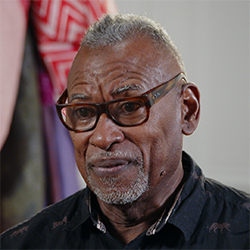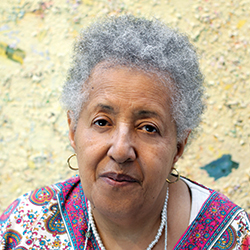Video
Elson Lecture 2024: Todd Gray
Todd Gray (b. 1954, lives and works in Los Angeles and Akwidaa, Ghana) is a photo-based artist known for his lush assemblages composed of framed, stacked photographs—with his largest spanning over 30 feet. His imagery ranges from imperial European gardens, West African landscapes, and architecture, to rock icons and self-portraits, all carefully arranged to create critical juxtapositions that examine ideas of African diaspora, colonialism, societal power structures, and dominant cultural beliefs. Gray earned his BFA and MFA from California Institute of the Arts in 1979 and 1989, respectively. Among his many awards and fellowships are the Bellagio Creative Arts Fellowship (2016), The Rockefeller Foundation (2016), John Simon Guggenheim Fellowship for Fine Arts (2018), and Rome Prize Fellowship, Visual Arts, American Academy in Rome, (2022-23). In this conversation with Kanitra Fletcher, the National Gallery's associate curator of African American and Afro-Diasporic art, learn about Todd Gray’s multidisciplinary practice and his innovative approach to photography. “Atlantic (Double Dutch)” (2022), an example of Gray’s “photo-sculptures,” is included in the National Gallery’s collection. The Elson Lecture Series features distinguished contemporary artists who are represented in the Gallery's permanent collection. The Honorable and Mrs. Edward E. Elson generously endowed this series in 1992.































